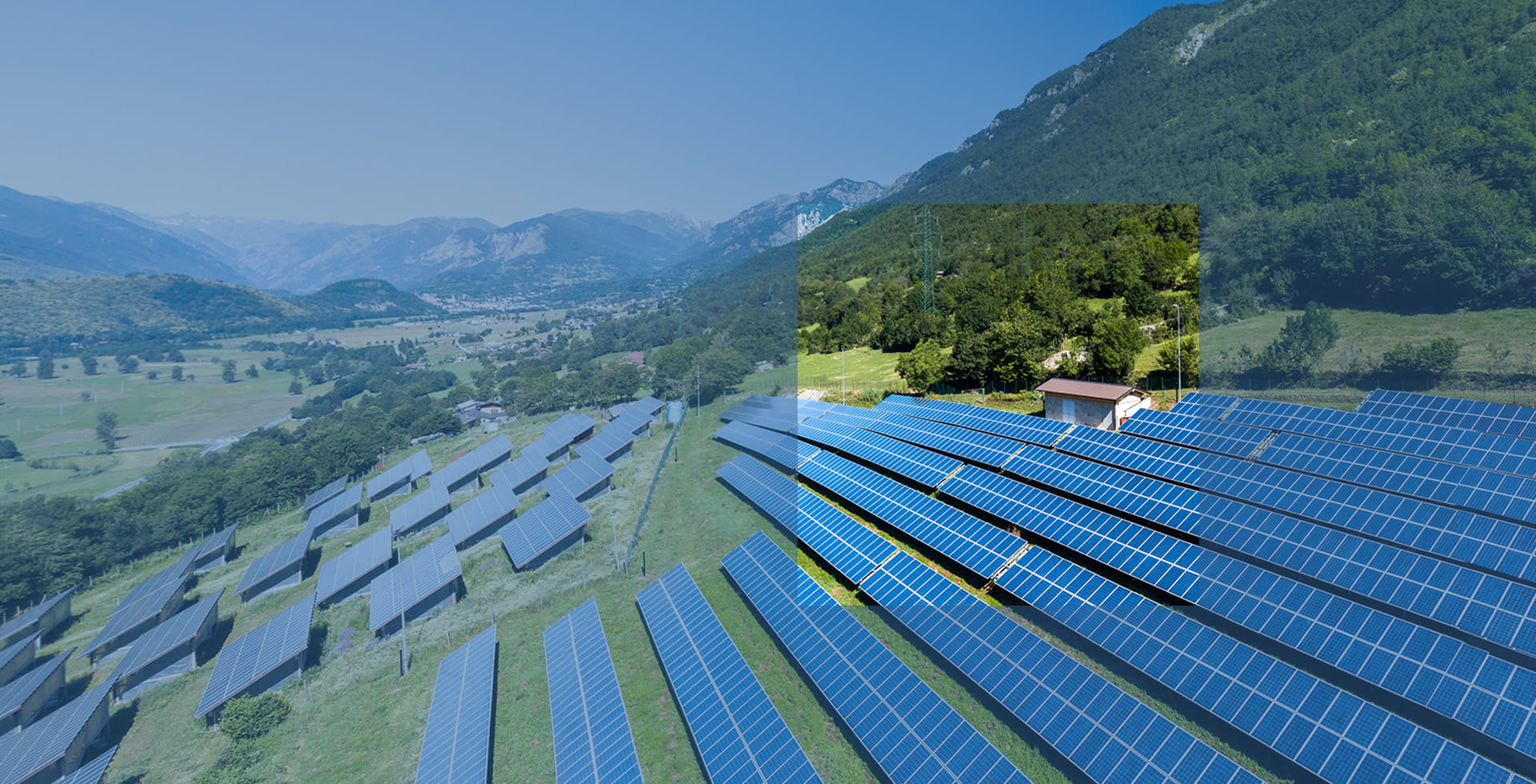
Summary
Investors increasingly want to use their capital to achieve an environmental and social impact while generating a return, and impact investing offers a solution to these twin goals. It represents a fast-growing and important asset class that facilitates positive change for the planet while resonating with a growing investor base.
Key takeaways
|
With the rising frequency of major environmental events and social movements – from floods to wildfires, from #MeToo to Black Lives Matter – the objective of making the world a better place has gone from personal choice to global necessity. The latest Intergovernmental Panel on Climate Change report, with its “code red” warning, represents another urgent wake-up call.
Moreover, the Covid-19 pandemic has revealed some profound social inequalities, and many investors have become increasingly aware of the role their capital can and should play in addressing these imbalances. In developing countries alone, the pandemic is thought to have magnified the existing funding shortfall needed to meet the UN Sustainable Development Goals (SDGs) by 2030.1 Against the backdrop of Covid, the previous estimate of USD 2.5 trillion a year required by developing countries to keep them on track to meet these goals increased by a further USD 1.7 trillion in 2020.
In terms of action on climate change, 2021 could be a milestone year. Beginning with the return of the US to the Paris Accord, the year has been characterised by extreme weather events and will culminate in COP26 – arguably the most important meeting yet of major nations on the climate topic.
While investors have become increasingly aware of the role their capital should play in addressing environmental and social concerns, the challenge has been to combine the twin goals of “doing good” and “earning a return” in a single investment. Impact investing offers an answer by providing a credible and scalable pathway to balancing a targeted measurable and beneficial environmental or social impact on the one hand, with a financial return on the other. As a result, it has transitioned from the realm of direct private-market investments into a significant and expanding market segment. Where investors previously thought only in terms of risk and reward, they can now add a third dimension of oversight to their portfolios: impact.
More opportunities are driving growth in impact investing
According to a recent survey focused on private markets, impact investing currently accounts for just 0.5% of global assets and USD 715 billion of assets under management.2 But it is growing at pace: the volume of impact-oriented investments rose by 77% annually between 2017 and 2019.3
The growth in impact investing has in part been driven by an increase in the investment options across the various impact asset classes. Whether through public or private instruments, investors can gain exposure through fixed income, equities, real estate, infrastructure and other real assets, and private equity and venture capital investment vehicles.
How the investment industry makes sure impact investments deliver
The future growth trajectory of impact investing depends on the industry demonstrating where these investments are being directed and why – and how the impact can be measured and reported. Debate continues about what constitutes an acceptable or competitive rate of return from these investments (see separate section at end, entitled “Impact investing: what constitutes an acceptable return?”).
Consensus has also emerged that impact investments should contribute to at least one, and preferably several, of the 17 UN SDGs. The involvement of the private sector will be critical to helping achieve these goals, not least because of the increasing shortfall in investment capital needed to finance the SDGs.
To assist with framing impact investments, the Global Impact Investing Network (GIIN) has outlined several requirements (see table). As the investment industry coalesces around these standards, an increasing number of private-market participants are developing initiatives around minimum requirements, and identifying best practices and audit processes for impact projects and investments. Examples include the Operating Principles for Impact Management and the Impact Management Project.4, 5 Raising the bar on transparency and reporting can help the industry deliver on its promise and insulate itself from accusations of “impact washing”, where funds make claims that are not substantiated by any relevant and demonstrable positive impact. In addition, monitoring the progress of investments in achieving impact against expectations helps improve decision-making and delivery.
Global Impact Investing Network standards for impact investments
Intentionality |
There must be a dedicated intention to achieve a clearly defined impact |
Causality |
The ability to demonstrate a positive effect from the investment (GIIN provides different levels of direct causality) |
Measurability |
If the desired impact is to be fully or partially achieved, this must be measured by a clearly defined set of key performance indicators (KPIs) |
Reporting |
The impact must be reported periodically, regularly and transparently |
Source: Global Impact Investing Network.
The breadth and depth of impact is developing very quickly
The notion of “co-investing” with sovereign and corporate entities to support transition strategies can be integral to impact investing. An example is the growth of debt that carries an ESG (environmental, social and governance) label – an asset class that is estimated to have topped USD 2 trillion in the second quarter of 2021.6 The majority of this debt derives from green, social and sustainability (GSS) bonds, where proceeds are directed towards specific projects with an ongoing audit requirement, but these bonds are complemented by other structures.
Impact investing can also extend to blended finance, where investment from both institutions and philanthropic funds can be combined to create opportunities for commercial investors. Sovereign nations are also getting in on the act, where impact investing can complement initiatives such as the World Bank’s International Development Association lending to low-income economies.7 Earlier this year, Benin issued Africa’s first social bond in the international markets, raising money to broaden access to drinking water for its population of 12 million.
From identifying risks to creating solutions
The best-in-class investment approach8 is a well-recognised and accepted way of directing capital towards companies with above-peer or better-than-average sustainability profiles. However, this framework is still heavily skewed towards avoiding those with less favourable sustainability profiles, rather than prioritising those geared towards new technologies and services that provide solutions.
Impact investing touches on this notion both in terms of targeting solutions and in terms of the opportunity set. Many “handprint” opportunities, which seek to positively contribute to sustainability objectives, revolve around new technologies and services that seek to shift the mechanics of our daily lives fundamentally. These are often in an early stage of development, an area that has typically been the preserve of venture capital and private equity. Nevertheless, there is a trend both to develop these solutions and to scale them for wider applications that can influence sectors and geographies. Impact investing’s reach into both public and private domains means it can cover the full breadth of the opportunity set. Its success is in connecting to the changing nature of client demands by articulating a three-dimensional perspective – incorporating risk, return and impact – and demonstrating how finance can lead to positive societal outcomes.
Impact investing: what constitutes an acceptable return?
As impact investing’s investment options grow, attention is turning to the second goal of impact – “earning a return” – and specifically what constitutes an acceptable or competitive rate of return. Views on this question vary and have arguably become more diverse in recent years. An underlying premise of investing for many is a “risk-adjusted financial return”. But how can the return be adjusted to account for non-financial risks – and can the addition of a non-financial return be quantified to complement a financial return?
The finance industry continues to refine the methodology for integrating ESG or sustainability factors into investment decisions, but formally integrating these into valuation models for investments has presented a challenge. Investors have historically focused on cyclicality and longer-term secular trends, but we see an increased focus on structural trends – ie, how a sector or company is aligned to changing expectations in the modern economy. We expect structural positioning to be a key factor for valuations.
A company or sector’s positioning in the modern economy, coupled with changing stakeholder expectations, could have a significant impact on assumptions regarding terminal growth rates, terminal margin rates, weighted average cost of capital and, ultimately, access to liquidity. We use the term “stakeholder” since it better encompasses the full breadth of those assessing behavioural biases. Simply put, if an entity’s potential investor universe is too narrow, its financing options will likely be constrained and the associated cost of capital higher.
The flip side is that those sectors, companies and projects geared to providing solutions will likely benefit from improved perceptions. By providing access to a broader audience, impact investing can help increase their financing options, lower their financing costs and enhance their overall financial viability.
Measuring the return of an impact
Work on calculating the value of a non-financial return has led to metrics such as a social return on investment (SROI) or impact multiple of money (IMM).9 Once the targeted impact outcome is identified – along with the relevance of a product or project to that outcome – it is possible to estimate the economic value of those outcomes with appropriate risk adjustments, and thereby generate an estimated terminal value. Then, based on the degree of risk associated with the project or product, an appropriate discount rate can be applied to calculate the estimated social or impact return on the investment. We expect this area of research to develop further.
The case for market – not maximised – returns
Assuming one can accurately calculate and attribute both the financial and the non-financial returns of an investment, there remains the divisive topic of the balance between the two. We disagree that there must be a trade-off between impact and financial returns. In fact, as non-financial returns become an increasingly important factor, they could provide a strong technical tailwind.
However, it may be difficult to target maximised rather than market rates of return. The difference lies in the associated risk attribution and adjustments tied to the expected rate of return. As such, fast-changing perceptions and attribution of sustainability risk factors could swiftly impact expected returns.
We like the notion of sustainability requiring an improving positive “handprint” coupled with the lowering of a “footprint”.10 The more the impact investment industry can qualify and quantify non-financial returns, the more likely these could not only complement, but also support, financial returns.
1 Source: Impact Investing Institute.
2 Source: Global Impact Investing Network.
3 Source: GP Bullhound.
4 Source: Operating Principles for Impact Management.
5 Source: Impact Management Project.
6 Source: Morgan Stanley ESG Labelled Debt Quarterly Tracker.
7 Defined as economies with a gross national income per capita of USD 1,045 or less in 2020. Source: World Bank.
8 Best in class ESG or sustainable investing refers to the construction of portfolios by the active selection of only companies or issuers who meet a defined threshold of environmental, social and governance (ESG) criteria. Typically the constituents of an investable universe will be measured against specific ESG metrics and a relative ranking of these constituents will be made. A threshold will be defined at and above which constituents will be considered to demonstrate “best in class” characteristics.
9 Source: Harvard Business Review.
10 The term handprint was first used in 2007 at UNESCO’s 4th International Conference on Environmental Education, but has since been referenced in many initiatives, including the UN Decade of Education for Sustainable Development in 2009. The handprint is the wider environmental and social impact that a company can achieve outside of its footprint. It is possible to reduce the footprint by addressing the quantity and scope of consumption, for example through selective exclusions or disciplined ESG integration. A positive handprint can be achieved by investing in key enablers of long-term solutions to support a more sustainable way of living beyond our consumption (SDGs, strategic focus and a scalable reach).
Investing involves risk. The value of an investment and the income from it may fall as well as rise and investors might not get back the full amount invested. The views and opinions expressed herein, which are subject to change without notice, are those of the issuer companies at the time of publication. The data used is derived from various sources, and assumed to be correct and reliable at the time of publication. The conditions of any underlying offer or contract that may have been, or will be, made or concluded, shall prevail. The Management Company may decide to terminate the arrangements made for the marketing of its collective investment undertakings in accordance with applicable de-notification regulation. The duplication, publication, or transmission of the contents, irrespective of the form, is not permitted; except for the case of explicit permission by Allianz Global Investors GmbH.
For investors in Europe (excluding Switzerland)
This is a marketing communication issued by Allianz Global Investors GmbH, www.allianzgi.com, an investment company with limited liability, incorporated in Germany, with its registered office at Bockenheimer Landstrasse 42-44, 60323 Frankfurt/M, registered with the local court Frankfurt/M under HRB 9340, authorised by Bundesanstalt für Finanzdienstleistungsaufsicht (www.bafin.de). The Summary of Investor Rights is available in English, French, German, Italian and Spanish at https://regulatory.allianzgi.com/en/investors-rights. Allianz Global Investors GmbH has established branches in the United Kingdom, France, Italy, Spain, Luxembourg, Sweden, Belgium and the Netherlands. Contact details and information on the local regulation are available here (www.allianzgi.com/Info).
For investors in Switzerland
This is a marketing communication issued by Allianz Global Investors (Schweiz) AG, a 100% subsidiary of Allianz Global Investors GmbH.
1819292 | COMM-428 | 5835

Summary
Part one of the latest UN Biodiversity Conference ended with optimism that biodiversity can be put on a path to recovery by 2030. It has never been more important for investors to play a role in protecting and promoting the world’s natural capital.
Key takeaways:
- Biodiversity is falling fast due mainly to human activity, with little action being taken to tackle the crisis
- There are reasons for optimism regarding biodiversity, as it’s not too late to tackle the crisis and there is every chance of political consensus for action
- Investors can play an important part by integrating biodiversity factors into their investment processes and backing innovators








